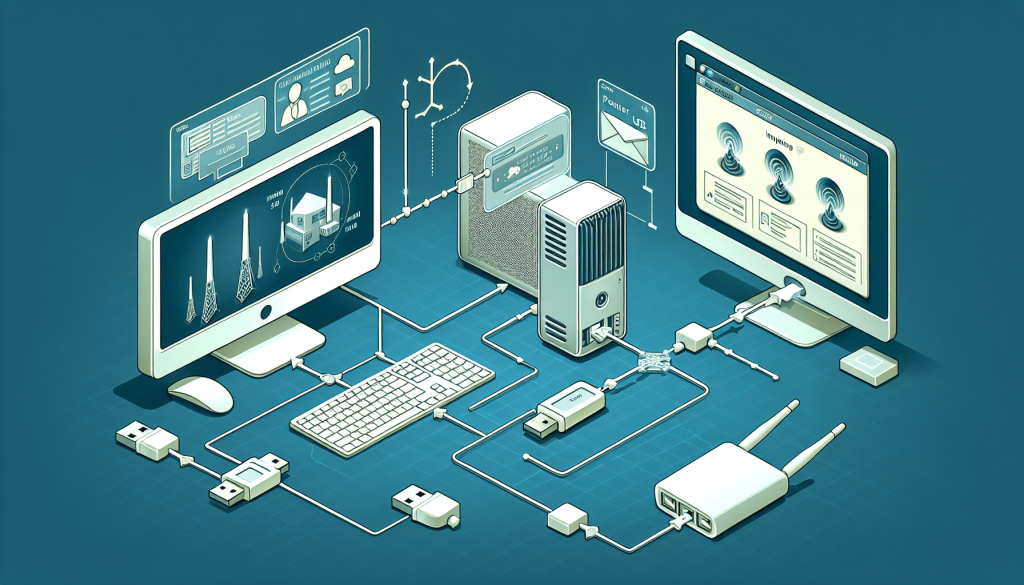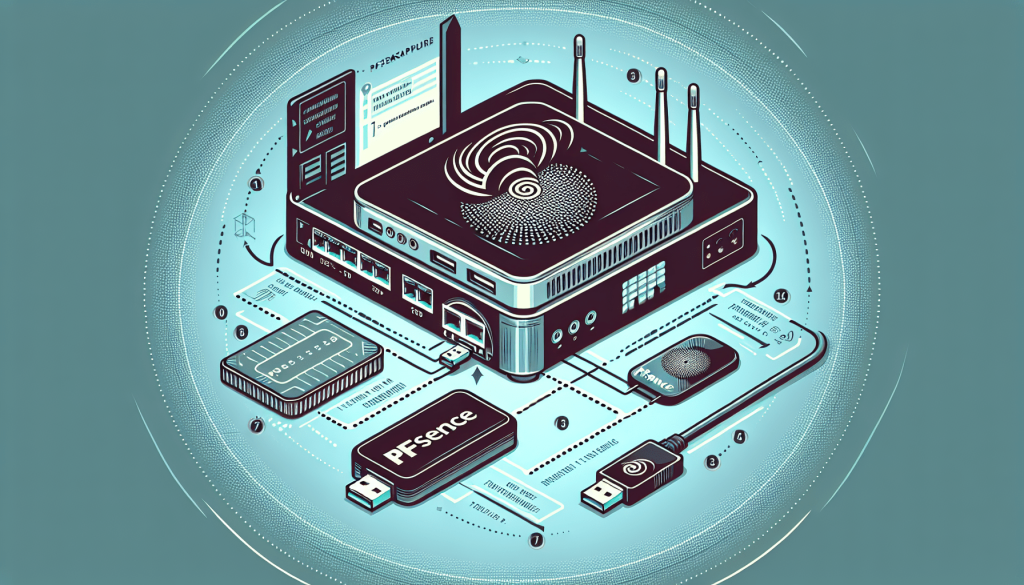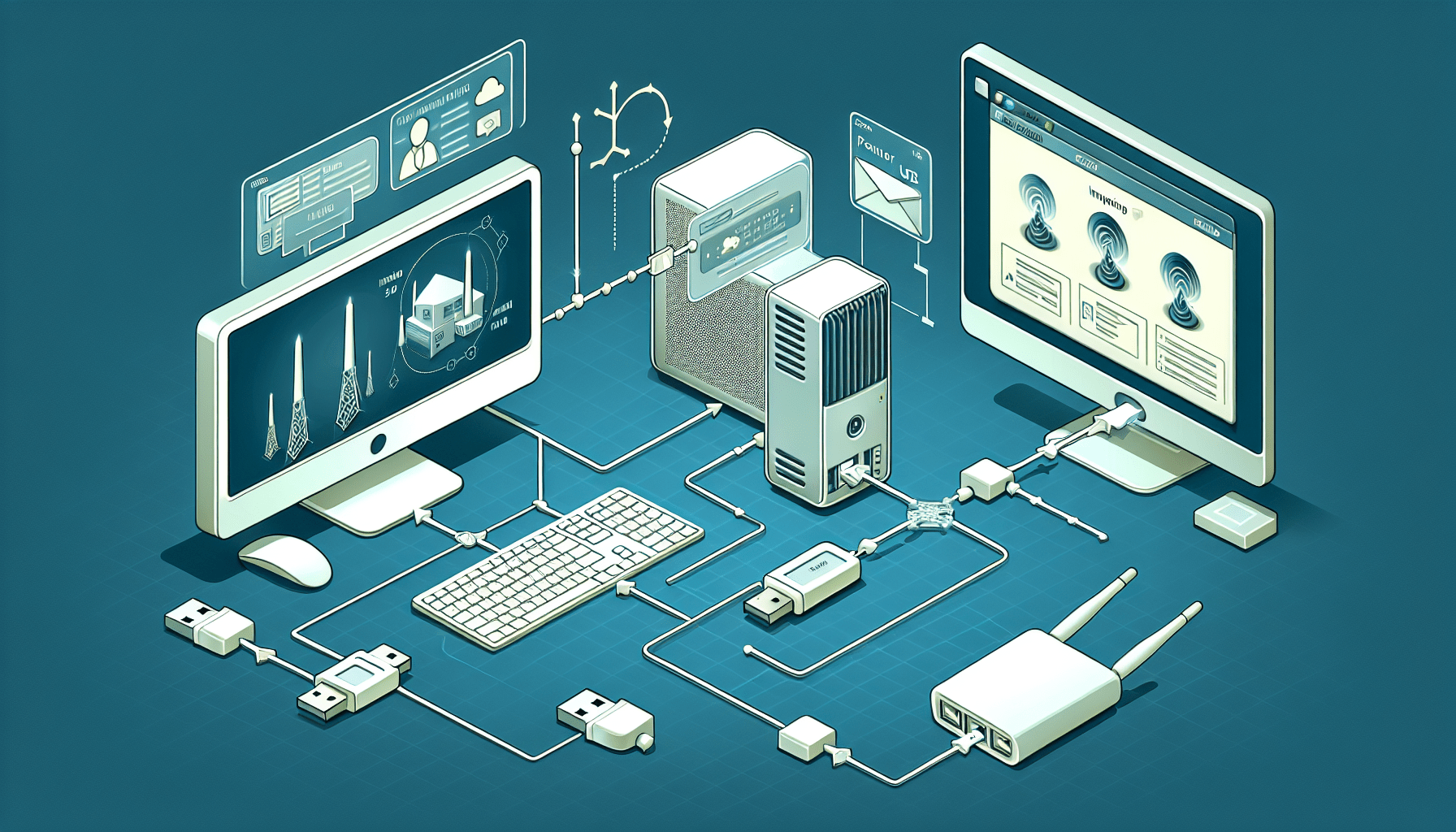Are you looking to install pfSense on a physical appliance but not sure where to start? Look no further! In this step-by-step guide, we will walk you through the entire installation process, from creating a bootable USB drive to configuring pfSense via the Web GUI. pfSense is an open-source firewall and router platform that provides advanced features and customization options. With minimum hardware requirements and additional information about compatibility, RAM requirements, and GUI options, this article has got you covered. So grab your USB drive and get ready to unleash the power of pfSense on your physical appliance!

Minimum Hardware Requirements
To ensure a smooth installation and optimal performance, it is important to meet the minimum hardware requirements for installing pfSense on a physical appliance. These requirements include:
64-bit CPU
A 64-bit CPU is necessary to run pfSense. This ensures that the system can handle the advanced features and customization options that pfSense offers. It is recommended to use a CPU with a clock speed of at least 500 MHz for better performance.
1GB of RAM
Having at least 1GB of RAM is essential for running pfSense effectively. This allows the system to handle the demands of network traffic and perform various tasks concurrently without slowing down or experiencing performance issues.
8GB of Disk Space
It is necessary to have a minimum of 8GB of disk space available for the installation of pfSense. This ensures that there is enough storage capacity to accommodate the operating system and any additional packages or configurations that may be added later on.
Compatible Network Interface
A compatible network interface is crucial for pfSense to function properly. Make sure that your physical appliance has a network interface card (NIC) that is supported by pfSense. This will enable the system to connect to your network and carry out firewall and routing functions effectively.
Downloading the pfSense Image
Before proceeding with the installation, you need to download the pfSense image from the official pfSense website. Follow these steps to download the image:
Visit the pfSense website
Open your web browser and go to the official pfSense website. The website provides a wealth of information and resources related to pfSense, including downloads and documentation.
Navigate to the Downloads section
Once you are on the pfSense website, navigate to the Downloads section. You can usually find this section in the main menu or at the top of the website. Look for a link or button that says “Downloads” and click on it.
Choose the appropriate pfSense image for your hardware
In the Downloads section, you will find various pfSense images for different hardware platforms. Choose the image that is compatible with your hardware. It is important to select the correct image to ensure a successful installation.
Click on the download link
Once you have selected the appropriate pfSense image, click on the download link to start the download process. The image file will be downloaded to your computer, and you will need it later for creating a bootable USB drive.
Creating a Bootable USB Drive
To install pfSense on a physical appliance, you will need to create a bootable USB drive. This USB drive will contain the pfSense image, allowing you to boot your appliance from it and start the installation process. Follow these steps to create a bootable USB drive:
Connect the USB drive to your computer
First, connect the USB drive to your computer using an available USB port. Make sure the USB drive has enough storage capacity to accommodate the pfSense image.
Format the USB drive
Before creating a bootable USB drive, it is essential to format the USB drive to ensure it is in the correct file system format. Right-click on the USB drive in your file explorer, select “Format,” and choose the appropriate file system format (e.g., FAT32 or NTFS). Be aware that formatting the drive will delete all existing data, so make sure to back up any important files before proceeding.
Use a tool like Rufus to create a bootable USB drive
To create a bootable USB drive, you can use software like Rufus. Rufus is a free and reliable tool that allows you to create bootable USB drives easily. Download and install Rufus on your computer, then open the program.
Select the downloaded pfSense image as the source
In Rufus, select the USB drive you connected earlier as the “Device.” Then, click on the small disk icon next to the “Boot selection” field and navigate to the location where you downloaded the pfSense image. Select the image file and click “Open” to set it as the source for the bootable USB drive.
Click on the ‘Start’ button to create the bootable USB drive
Once you have selected the USB drive and the pfSense image, click on the “Start” button in Rufus to begin creating the bootable USB drive. Rufus will format the USB drive, copy the necessary files, and make it bootable. This process may take a few minutes, so be patient.
Setting up the Connection to pfSense
After creating the bootable USB drive, you are now ready to set up the connection to pfSense on your physical appliance. Follow these steps to ensure a successful connection:
Connect the physical appliance to power
Ensure that your physical appliance is properly connected to a power source. Connect the power cable to the appliance and plug it into an electrical outlet.
Connect a network cable from your computer to the physical appliance
To establish a connection with pfSense, you need to connect a network cable from your computer to the physical appliance. Connect one end of the network cable to an available Ethernet port on your computer and the other end to an Ethernet port on the physical appliance.
Power on the physical appliance
Once the physical appliance is properly connected to power and your computer, turn on the appliance by pressing the power button. Allow the appliance to initialize and boot up.
Access the BIOS settings using the appropriate key
To configure the physical appliance to boot from the USB drive, you need to access the BIOS settings. The specific key to access the BIOS may vary depending on the manufacturer of your appliance. Common keys include F2, F8, or Delete. Consult the documentation of your appliance or perform a quick web search to determine the correct key for accessing the BIOS settings.
Configure the BIOS to boot from the USB drive
Once you are in the BIOS settings, navigate to the “Boot” or “Boot Order” section. Look for an option that allows you to change the boot order. Set the USB drive as the first boot option in the list. Save the changes and exit the BIOS settings.

Connecting to pfSense using puTTY
puTTY is a popular terminal emulator program that allows you to connect to devices via SSH. Follow these steps to establish a connection to pfSense using puTTY:
Open puTTY on your computer
If you haven’t installed puTTY yet, you can download it from the official puTTY website and install it on your computer. Once installed, open puTTY.
Enter the IP address of the physical appliance
In puTTY, enter the IP address of the physical appliance to establish the SSH connection. The IP address should have been assigned to the physical appliance during the installation process.
Set the connection type to ‘SSH’
Make sure the connection type is set to “SSH” in puTTY. This will ensure that you establish an SSH connection to the physical appliance running pfSense.
Click on the ‘Open’ button to establish the connection
Once you have entered the IP address and set the connection type, click on the “Open” button in puTTY to establish the connection. puTTY will connect to the physical appliance running pfSense using SSH.
Enter the default username and password when prompted
When prompted, enter the default username and password. The default username is typically “admin,” and the default password is usually “pfsense.” It is important to change the default password after logging in to ensure the security of your pfSense installation.
Installing pfSense
With your puTTY connection established, you can now proceed with the installation of pfSense. Follow these steps to install pfSense on your physical appliance:
Follow the on-screen instructions to start the installation process
Once you have successfully logged in to pfSense using puTTY, you will be presented with a series of on-screen instructions. Follow these instructions to begin the installation process. You may need to confirm certain installation settings, such as the language and keyboard layout, during this stage.
Choose the appropriate installation options
Based on your specific requirements and network setup, choose the appropriate installation options when prompted. These options may include setting up network interfaces, configuring VLANs (Virtual Local Area Networks), or specifying DNS (Domain Name System) settings. Make sure to carefully configure these options to suit your needs.
Wait for the installation to complete
The installation process may take some time, depending on your hardware and the selected options. Allow the installation to complete and do not interrupt the process. Sit back and relax while pfSense is installed on your physical appliance.
Reboot the physical appliance
After the installation is complete, you will be prompted to reboot the physical appliance. Follow the on-screen instructions to reboot the appliance. Once the appliance has restarted, pfSense will be ready to use.

Configuring pfSense via the Web GUI
With pfSense installed on your physical appliance, you can now configure it to meet your specific requirements. The configuration process is done via the Web Graphical User Interface (Web GUI), which provides a user-friendly interface for managing and customizing pfSense. Follow these steps to configure pfSense using the Web GUI:
Open a web browser on your computer
On your computer, open a web browser of your choice. Ensure that the computer is connected to the same network as the physical appliance running pfSense.
Enter the IP address of the physical appliance
In the address bar of your web browser, enter the IP address of the physical appliance running pfSense. This will take you to the pfSense Web GUI.
Enter the default username and password to log in
On the login page of the Web GUI, enter the default username and password. As mentioned earlier, the default username is typically “admin,” and the default password is usually “pfsense.” After logging in, it is crucial to change the default password to secure your pfSense installation.
Follow the on-screen instructions to configure pfSense
Once logged in to the Web GUI, you will be presented with various configuration options and settings. Follow the on-screen instructions and prompts to configure pfSense according to your specific requirements. This may include setting up network interfaces, configuring firewall rules, enabling services, and customizing various aspects of pfSense.
Set up network interfaces, firewall rules, and other settings
Configure the network interfaces according to your network topology and requirements. You can set up WAN (Wide Area Network) and LAN (Local Area Network) interfaces, assign IP addresses, configure DHCP (Dynamic Host Configuration Protocol), and apply firewall rules to control network traffic. Additionally, you can explore other settings and features of pfSense to fine-tune the system to your needs.
Frequently Asked Questions about pfSense
Here are some frequently asked questions (FAQs) about pfSense:
Is pfSense compatible with my existing router?
Yes, pfSense is compatible with existing routers. You can deploy pfSense as a standalone router or integrate it into an existing network infrastructure. pfSense offers advanced routing capabilities, including multi-WAN (Wide Area Network) and policy-based routing, making it a powerful solution for managing and securing your network.
What are the RAM requirements for pfSense?
The minimum RAM requirement for pfSense is 1GB. However, it is recommended to have at least 4GB of RAM or more for better performance, especially if you plan to use advanced features like VPN (Virtual Private Network) or run multiple packages concurrently.
Does pfSense have a GUI?
Yes, pfSense has a user-friendly Web GUI that allows you to configure and manage the system easily. The Web GUI provides a graphical interface for accessing various settings and features of pfSense, making it accessible to users with different levels of technical expertise.
Can I install additional packages in pfSense?
Yes, pfSense supports the installation of additional packages to extend its functionality. These packages can be installed via the Web GUI and provide additional features such as intrusion detection and prevention systems, content filtering, and traffic shaping. The availability of packages may vary, so it is recommended to review the available options and choose the ones that best suit your needs.
How often should I update pfSense?
To ensure the security and performance of your pfSense installation, it is important to regularly update the system. Updates include bug fixes, security patches, and new features. It is recommended to keep your pfSense installation up to date by regularly checking for updates and applying them as soon as they become available.
Conclusion
Congratulations! You have successfully installed pfSense on your physical appliance. By following the step-by-step guide provided in this article, you have set up the necessary hardware requirements, downloaded the pfSense image, created a bootable USB drive, established the connection to pfSense, and installed and configured pfSense using the Web GUI. Remember to configure pfSense to meet your specific requirements and regularly update it to ensure security and performance. With pfSense, you now have a powerful open-source firewall and router platform that offers advanced features and customization options for your network. Enjoy exploring and maximizing the capabilities of pfSense to enhance your network’s security and efficiency.



